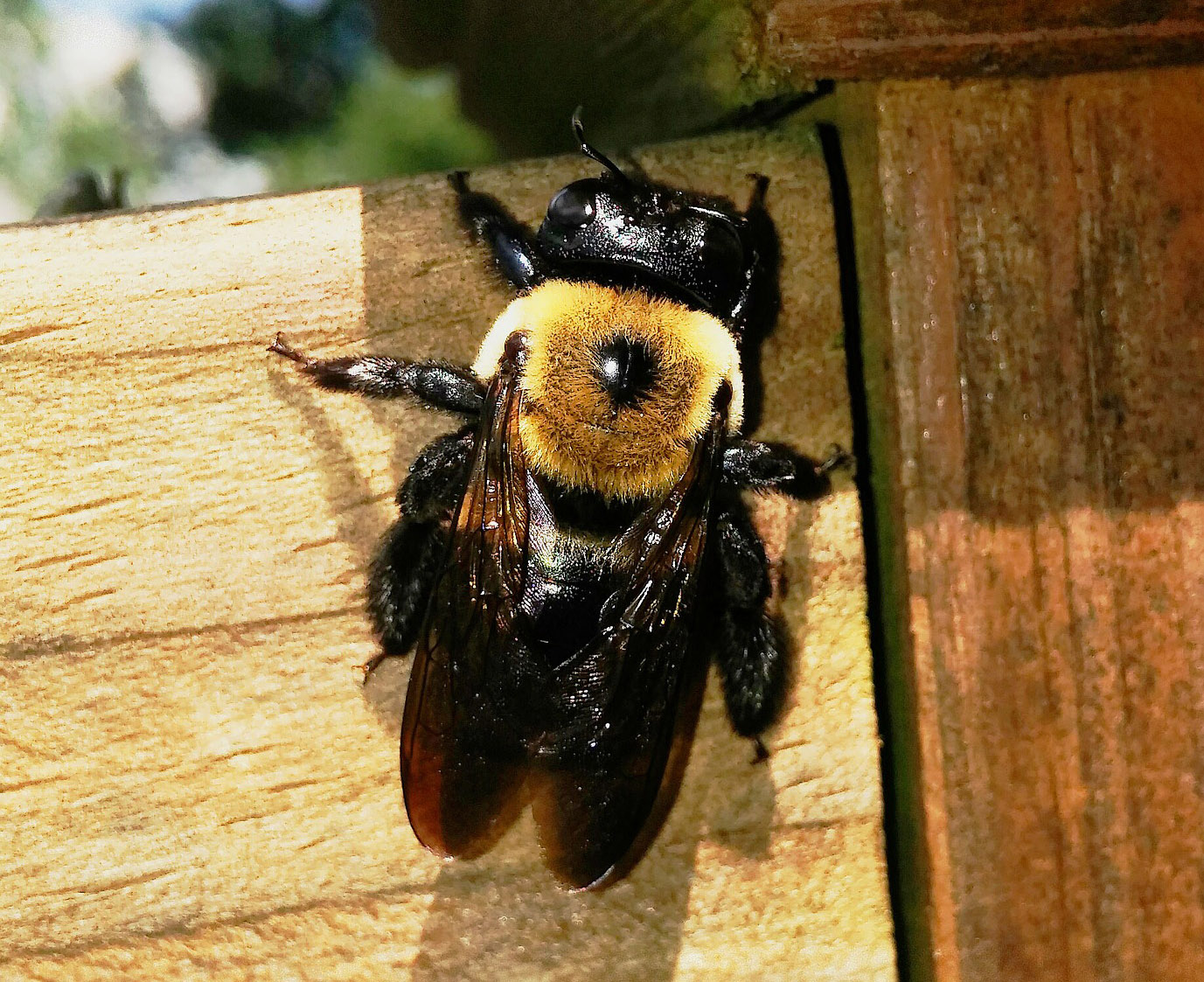How To Identify Termite and Carpenter Bees and The Damage They Cause
If you begin to see suspicious damage to the wood structure of your home, there could be a chance that wood-boring insects may be to blame. Although you might think that termites are the culprit, other insects can wreak havoc on wood structures. Along with termites, carpenter bees are known to damage wood. The Kness team will help you see the difference between these two types of insects and the damage they cause.
Identifying Termites

Resembling tiny flying ants, termite swarms have four wings around the same length, antennae that are straight (sometimes drooping), and usually brown. Worker termites do not have wings but still have antennae and are commonly white or almost translucent in appearance. Termites rarely emerge from their colonies once they are established. Due to their reclusive nature, they can be challenging to detect until an infestation is full-fledged. As a termite infestation grows, they give off a scent that has the consistency of mildew or mold.
Signs of Termite Damage
Termites specialize in eating wood and other plant material. These pests can quickly create a large colony and easily threaten wood structures. This damage usually isn't apparent until the infestation becomes extensive. Termite damage can resemble water-damaged wood. If you see signs similar to bowed floors, buckling wood, sagging ceilings, or even visible branched-out areas on the wood that appear to be burrowed out, there is a likelihood of a termite problem.
Identifying Carpenter Bees

There are two types of carpenter bees in North America, the large carpenter bee (Xylocopa) and the small carpenter bee (Ceratina). Large carpenter bees range in size from nearly 1/5" to 1" in length and have a black, greenish-black, or metallic blue-colored body with yellow hairs on the legs, thorax, and abdomen. Small carpenter bees are a little over 1/4" in length and have a dark, metallic appearance with yellow marking on the face and abdomen.
Signs of Carpenter Bee Damage
Carpenter bees do not eat wood but will bore into it and excavate the wood to create their hive. They prefer to nest in wood such as pine, oak, redwood, fir, and cypress, but they will burrow into unpainted, dry, and weakened lumber too. In man-made structures, their nests are commonly found in decking, doors, railings, windowsills, roof eaves, and untreated banisters and fence posts. Signs of a carpenter bee infestation include entry holes (around 1/2” in diameter), sawdust present on the ground below the entry hole, yellow-colored pollen and fecal material near the hole, and visible sightings of the bees going in and out of the entry point.
If you spot any signs of termite or carpenter bee damage, you should call a pest professional to assess the infestation's full extent and next steps to remove the pests. For more information about other pests, preventative tips, and pest control products and solutions, explore Kness.com today and see how we can help you enhance your defense again pests.